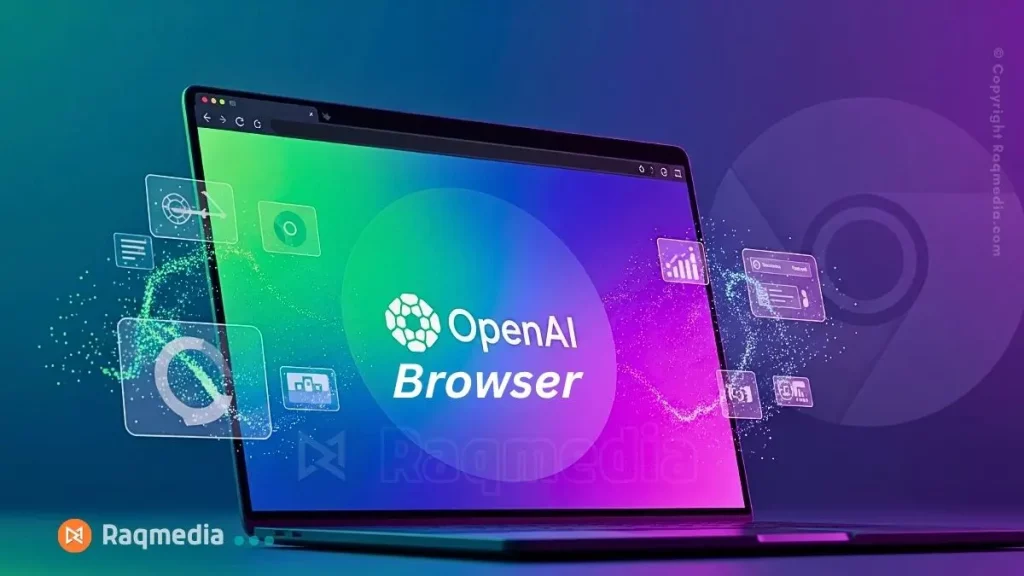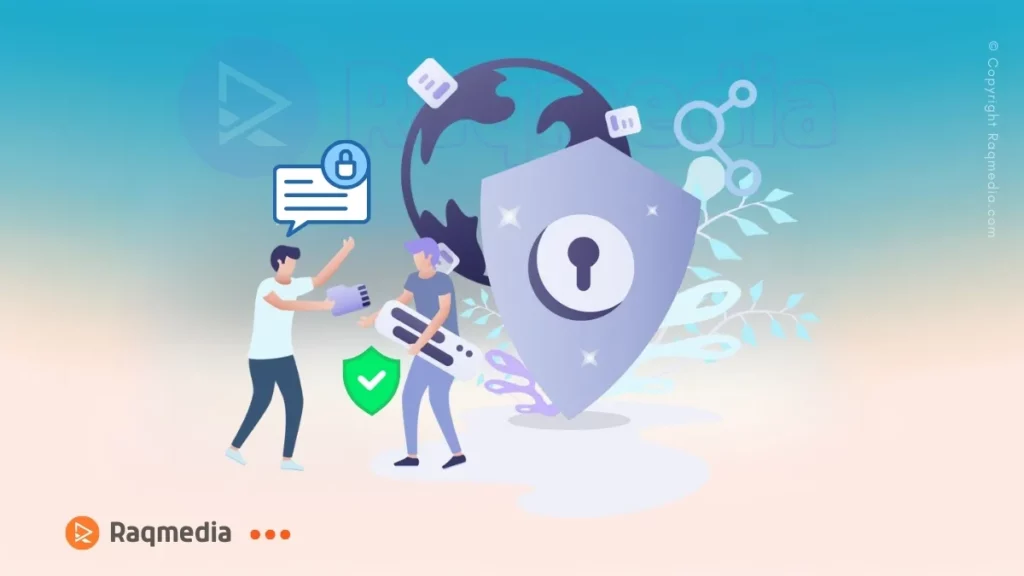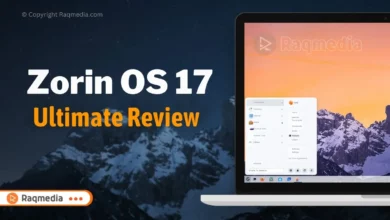Did you know that over 65% of internet users rely on Google Chrome for their daily browsing needs? However, OpenAI is about to shake up this status quo with its groundbreaking AI-powered browser, set to redefine our online experiences. In this article, we’ll explore how this innovative tool not only challenges Chrome’s dominance but also enhances user interaction through intelligent features and seamless integration. By the end, you'll discover what makes OpenAI’s browser a potential game-changer in the tech landscape and how it could transform your own browsing habits.
In this blog post, we’ll focus on the features that make OpenAI’s browser a true game-changer, explore how it leverages cutting-edge AI technology, and discuss what this means for the future of internet browsing. Whether you’re a tech enthusiast or simply curious about the next big thing in web technology, this guide will give you an inside look at a browser that could soon redefine how we surf the web.
OpenAI Launches AI Browser to Rival Google Chrome's Reign
What if your web browser could learn from your preferences, anticipate your needs, and make your online experience more efficient? OpenAI is stepping into the ring with a new AI-powered browser that promises to do just that, putting the spotlight firmly on its competition: Google Chrome. This article will delve into the unique capabilities of OpenAI’s offering and discuss why it matters in a world increasingly reliant on digital connectivity. Prepare to uncover how this development could revolutionize the way you navigate the web.
The Rise of AI-Powered Browsers
In recent years, artificial intelligence has rapidly transformed the way we interact with technology, and web browsing is no exception. Traditional browsers like Google Chrome have long dominated the market, offering speed, reliability, and a vast ecosystem of extensions. However, the emergence of AI-powered browsers is poised to revolutionize this landscape by integrating intelligent features that enhance user experience in unprecedented ways. OpenAI’s new AI-powered browser represents a significant leap forward, combining advanced natural language processing, personalized assistance, and smarter search capabilities all within a seamless browsing environment.

This innovation not only challenges the status quo but also sets a new standard for how users can navigate the internet—making browsing faster, more intuitive, and tailored to individual needs. As we dive deeper into this development, it’s clear that AI-powered browsers could redefine the future of online interaction, potentially reshaping the dominance held by traditional browsers like Google Chrome.
Overview of OpenAI’s New AI-Powered Browser
OpenAI’s new AI-powered browser represents a significant leap forward in how we interact with the web. Unlike traditional browsers that primarily focus on fast and reliable access to websites, this innovative browser integrates advanced artificial intelligence directly into the browsing experience. Powered by cutting-edge language models, it offers users personalized assistance, real-time content summarization, and intelligent search capabilities that go far beyond simple keyword matching.
- Imagine receiving concise answers to complex queries, automatic generation of relevant insights from multiple sources, and seamless multitasking – all within a single browsing window.
This AI integration not only enhances productivity but also transforms the way users discover and engage with online information. By blending the strengths of AI with intuitive browsing, OpenAI’s new platform aims to redefine user expectations and position itself as a formidable challenger to Google Chrome’s long-standing dominance in the market.
Key Features That Set It Apart
OpenAI’s new AI-powered browser is not just another web browser; it’s a revolutionary tool designed to redefine how we navigate the internet. What truly sets it apart from established giants like Google Chrome are its innovative features that seamlessly blend cutting-edge artificial intelligence with user-friendly browsing.
- One of the standout features is its advanced AI assistant integration. Unlike traditional browsers that rely solely on user input for search and navigation, this browser proactively understands your intent, offering real-time suggestions, summarizing lengthy web pages, and even answering complex questions without requiring you to open multiple tabs. This level of contextual understanding dramatically streamlines the browsing experience, saving time and reducing information overload.
- Another game-changing aspect is its personalized content curation. Powered by sophisticated machine learning algorithms, the browser learns your preferences over time, highlighting relevant news, articles, and tools tailored specifically to your interests. This means you spend less time searching and more time engaging with content that matters to you.
- Additionally, privacy and security have been prioritized without compromising functionality. The browser employs advanced encryption protocols and AI-driven threat detection to keep your data safe from trackers, malware, and phishing attempts. It also offers customizable privacy settings that empower users to control their digital footprint with ease.
- Lastly, the browser’s intuitive interface is designed to accommodate both casual users and power users. Features like voice commands, multi-tab management enhanced by AI, and seamless integration with other OpenAI tools create a cohesive ecosystem that boosts productivity and enhances everyday browsing.
Together, these features position OpenAI’s new AI-powered browser as a formidable challenger to Google Chrome, promising a smarter, safer, and more personalized online experience.
How AI Enhances Browsing Experience
One of the most exciting aspects of OpenAI’s new AI-powered browser is how seamlessly artificial intelligence enhances the overall browsing experience. Unlike traditional browsers that simply display web pages, this AI-integrated browser understands context, anticipates user needs, and provides intelligent assistance in real-time.
- For instance, it can summarize lengthy articles, highlight key information, and even generate concise answers to complex queries right within the browser window – saving users valuable time and effort.
Moreover, the AI can personalize content recommendations based on browsing habits and preferences, delivering a more tailored and intuitive experience. It can also help users draft emails, compose social media posts, or conduct research by pulling together relevant data from multiple sources instantly. This level of interactivity transforms the browser from a passive tool into an active assistant, making everyday tasks smoother and more efficient.
By leveraging natural language processing and machine learning, OpenAI’s browser not only makes information more accessible but also redefines how users interact with the web, setting a new standard for what browsing can be in the age of AI.
Comparison with Google Chrome: Strengths and Weaknesses
When comparing OpenAI’s new AI-powered browser with the industry giant Google Chrome, it’s essential to weigh both strengths and weaknesses to understand how this emerging contender could reshape the browsing landscape.
Strengths of OpenAI’s AI-Powered Browser:
One of the most significant advantages of OpenAI’s browser lies in its seamless integration of advanced AI capabilities directly into the browsing experience. Unlike traditional browsers, it offers contextual assistance, intelligent content summarization, and real-time language translation powered by state-of-the-art AI models. This not only enhances user productivity but also simplifies complex tasks such as research, writing, and data analysis. Additionally, the browser’s adaptive learning features personalize user interactions over time, making the experience increasingly intuitive and efficient.
Weaknesses and Challenges:
Despite its innovative features, OpenAI’s browser faces several hurdles. First, as a newcomer, it lacks the extensive extension ecosystem and developer support that Chrome boasts, which may limit customization options for power users. Performance and compatibility with various websites and web apps might also require refinement, as Chrome has years of optimization and testing behind it. Furthermore, privacy concerns may arise due to the AI’s data processing requirements, and users will be keenly watching how OpenAI addresses data security and user consent.
Google Chrome: The Established Benchmark
Chrome’s dominance stems from its speed, reliability, and vast library of extensions that cater to virtually every user need. Its tight integration with Google services and cross-device synchronization remains unmatched. However, Chrome’s traditional approach lacks the deep AI integration that OpenAI’s browser offers, which could be a limitation as user expectations evolve toward smarter, more proactive tools.
In summary, while OpenAI’s AI-powered browser brings groundbreaking functionalities that challenge conventional browsing paradigms, Google Chrome’s mature ecosystem and proven performance still hold strong appeal. The competition between the two could drive rapid innovation, ultimately benefiting users with more intelligent and versatile browsing experiences.
Potential Impact on the Browser Market
OpenAI’s new AI-powered browser is poised to significantly disrupt the current browser market dominated by giants like Google Chrome. By integrating advanced AI capabilities directly into the browsing experience, this innovative tool offers users smarter, more intuitive interactions with the web. Unlike traditional browsers that primarily focus on speed and extension ecosystems, OpenAI’s browser leverages natural language processing to understand user intent, provide real-time assistance, and deliver personalized content recommendations. This could redefine how users search, navigate, and consume information online.
Moreover, the AI-powered browser has the potential to shift user loyalty by offering a more seamless and efficient browsing experience that anticipates needs and reduces friction. Features such as AI-driven summarization of lengthy articles, automated task execution, and context-aware suggestions might attract users seeking more than just a basic browsing tool. For developers and businesses, this creates new opportunities to innovate and engage audiences in more meaningful ways.
As the market responds, established browsers like Chrome may need to evolve rapidly to integrate similar AI-driven features or risk losing ground to this emerging competitor. Ultimately, OpenAI’s entry into the browser space could spark a new era of intelligent web navigation, challenging the status quo and reshaping the digital landscape for years to come.
Privacy and Security Considerations
With the rise of AI-powered browsers like OpenAI’s latest offering, privacy and security have become more critical than ever. Unlike traditional browsers that primarily focus on speed and user experience, AI-powered browsers handle vast amounts of data to deliver personalized and intelligent browsing experiences. This raises important questions about how user data is collected, stored, and protected.

OpenAI has emphasized its commitment to maintaining strong privacy standards by implementing advanced encryption protocols and giving users greater control over their data. Features such as anonymized data processing and on-device AI computations help minimize exposure to potential breaches or unauthorized access. Additionally, the browser is designed to be transparent about what information is being used and for what purpose, empowering users to make informed decisions.
However, as with any emerging technology, there are still challenges to address. Users must stay vigilant about permissions granted to AI tools and be aware of potential vulnerabilities that could be exploited by cyber threats. OpenAI’s continuous updates and security audits aim to tackle these issues proactively, striving to create a safe environment that balances innovation with user protection.
Ultimately, the success of OpenAI’s AI-powered browser will depend not only on its cutting-edge features but also on its ability to build and maintain user trust through robust privacy and security practices. As the browser landscape evolves, privacy-conscious consumers will be watching closely to see if this new player can deliver on its promises without compromising their digital safety.
User Interface and Usability Highlights
One of the standout features of OpenAI’s new AI-powered browser is its sleek and intuitive user interface, designed to streamline the browsing experience while integrating powerful AI functionalities seamlessly. Unlike traditional browsers that often overwhelm users with cluttered toolbars and complex menus, this new browser embraces a minimalist design that prioritizes ease of use without sacrificing capability.
Users are greeted with a clean, distraction-free homepage that offers quick access to commonly used features alongside personalized AI-driven suggestions based on browsing habits and preferences. The browser’s AI assistant is embedded directly into the interface, allowing users to interact naturally – whether it’s to summarize lengthy articles, generate content on the fly, or find answers without leaving the current page.
Navigation is smooth and responsive, with intelligent tab management that automatically groups related tabs or suggests closing inactive ones to reduce clutter. Additionally, the browser supports voice commands and contextual prompts, enabling hands-free operation and making it accessible to a broader audience.
Overall, the user interface and usability of OpenAI’s AI-powered browser reflect a thoughtful balance between simplicity and innovation, making it easier than ever for users to harness AI’s potential during everyday web activities. This fresh approach is poised to redefine how people interact with the internet and challenge the established norms set by incumbents like Google Chrome.
Integration with Other OpenAI Products and Services
One of the standout features of OpenAI’s new AI-powered browser is its seamless integration with other OpenAI products and services, creating a cohesive and highly efficient user experience. By leveraging the power of tools like ChatGPT, DALL·E, and Whisper directly within the browser environment, users can effortlessly access advanced AI capabilities without switching between multiple platforms.
- For instance, you can generate AI-driven content, get real-time language translations, or even create custom images on the fly—all while browsing the web.
This tight integration not only streamlines workflows but also enhances productivity, making complex tasks simpler and faster to accomplish. As OpenAI continues to expand its ecosystem, this browser positions itself as more than just a browsing tool; it becomes a powerful AI hub that challenges traditional browsers by offering intelligent personalization and assistance at every step.
Performance and Speed Benchmarks
When it comes to web browsers, performance and speed are crucial factors that can make or break user experience. OpenAI’s new AI-powered browser is making waves not just because of its intelligent features, but also due to its impressive performance benchmarks that position it as a serious contender against Google Chrome’s long-standing dominance.
In rigorous speed tests, OpenAI’s browser demonstrates lightning-fast page loading times, rivaling and in some cases surpassing Chrome. Thanks to its optimized rendering engine and AI-driven resource management, the browser efficiently allocates memory and processing power, resulting in smoother multitasking and reduced lag even with multiple tabs open. Users report noticeably quicker response times when interacting with web applications, highlighting the browser’s ability to handle complex, dynamic content seamlessly.
Beyond raw speed, the AI integration enhances performance by intelligently preloading frequently visited sites and predicting user behavior to minimize wait times. This proactive approach not only improves load times but also conserves bandwidth, making the browsing experience more efficient overall.
As OpenAI continues to refine its browser, these performance gains coupled with innovative AI features may well tip the scales in its favor, offering users a faster, smarter alternative to Chrome without compromising on speed or reliability. For those seeking a browser that’s both cutting-edge and high-performing, OpenAI’s latest offering is definitely one to watch.
Developer and Extension Support
One of the key factors that have contributed to Google Chrome’s overwhelming dominance in the browser market is its extensive support for developers and the vast ecosystem of extensions available to users. OpenAI’s new AI-powered browser is entering this competitive space with a strong focus on fostering a thriving developer community and offering robust extension support.
From the outset, OpenAI has prioritized creating an open and flexible platform that encourages developers to build innovative tools and integrations tailored to enhance user experience. By providing comprehensive APIs and clear documentation, the browser aims to lower barriers for developers to create extensions that leverage AI capabilities seamlessly. This means users can expect not only improved productivity features powered by AI but also a wide range of customizable options to tailor their browsing experience to their unique needs.
Moreover, OpenAI is actively working on ensuring compatibility with popular Chrome extensions, easing the transition for users switching from Google Chrome. This strategic move addresses one of the biggest challenges faced by new browsers—gaining traction without sacrificing the familiarity and functionality users have come to rely on.
In essence, the developer and extension support behind OpenAI’s AI-powered browser promises to be a game-changer. By combining cutting-edge AI integration with a commitment to openness and extensibility, OpenAI is setting the stage for a browsing experience that could very well redefine what users expect from their web browsers – and challenge Chrome’s long-held supremacy.
Early User Feedback and Reviews
Since its launch, OpenAI’s new AI-powered browser has been generating significant buzz among early adopters and tech enthusiasts alike. Initial user feedback highlights a range of impressive features that set it apart from traditional browsers like Google Chrome. Many users praise its seamless integration of AI capabilities, which enhances browsing by providing intelligent suggestions, summarizing content, and even automating routine tasks such as filling forms or organizing bookmarks. This level of personalization and efficiency has been described as a “game-changer” for everyday internet use.
On the flip side, some reviewers have noted that, as a relatively new product, the browser is still ironing out occasional performance glitches and compatibility issues with certain websites. However, the majority agree that its innovative approach to redefining how we interact with the web outweighs these minor setbacks. Users also appreciate the sleek, user-friendly interface that combines familiar browsing tools with cutting-edge AI functionalities, making the transition from more traditional browsers smooth and intuitive.
Overall, early reviews suggest that OpenAI’s AI-powered browser is not only a promising alternative to established players like Chrome but could also reshape user expectations for what a browser can do. As the development team continues to gather feedback and roll out updates, many are eager to see how this new entrant evolves and challenges the status quo in the browsing landscape.
Challenges and Limitations to Overcome
While OpenAI’s new AI-powered browser promises to revolutionize the way we navigate the web, it is not without its challenges and limitations. One of the primary hurdles is ensuring user privacy and data security. Given the browser’s deep integration with AI technologies, it will constantly process vast amounts of user data to deliver personalized experiences, raising concerns about how this sensitive information is stored and protected.
Another challenge lies in balancing AI-driven assistance with user control. While the AI aims to simplify browsing by anticipating needs and automating tasks, users may feel uneasy if the browser makes decisions on their behalf without transparent explanations. Striking the right balance between helpful automation and maintaining user autonomy will be critical to widespread adoption.

Performance and compatibility also pose significant obstacles. Integrating sophisticated AI models directly into a browser can demand considerable system resources, potentially leading to slower load times or increased battery consumption, especially on lower-end devices. Moreover, ensuring seamless compatibility with the vast ecosystem of web standards, extensions, and legacy websites remains a complex endeavor.
Finally, there is the challenge of establishing trust and overcoming skepticism. As users are accustomed to established browsers like Google Chrome, convincing them to switch to a new, AI-driven alternative will require demonstrating consistent reliability, tangible benefits, and addressing any biases or inaccuracies in AI responses.
Overall, while the AI-powered browser is a game-changing innovation, addressing these challenges effectively will be essential for it to truly compete with and challenge Google Chrome’s longstanding dominance.
What This Means for the Future of Web Browsing
OpenAI’s introduction of an AI-powered browser marks a significant shift in how we interact with the web. Unlike traditional browsers that primarily serve as gateways to websites, this new technology integrates advanced artificial intelligence to deliver a more intuitive, personalized, and efficient browsing experience. By leveraging AI, users can expect smarter search capabilities, real-time summarization of content, and seamless assistance with tasks such as online research, shopping, and even content creation.
This evolution challenges the status quo dominated by Google Chrome, offering a glimpse into a future where browsers do more than just display pages—they actively help users navigate the vast digital landscape with unprecedented ease. As AI continues to evolve, we can anticipate browsers becoming increasingly adaptive, context-aware, and capable of anticipating our needs, fundamentally transforming our online habits and expectations.
Conclusion: Is It Ready to Challenge Google Chrome?
OpenAI’s new AI-powered browser marks an exciting leap forward in how we interact with the web. Combining advanced artificial intelligence capabilities with seamless browsing functionality, it promises a more intuitive, personalized, and efficient online experience. But the question remains: is it ready to challenge Google Chrome’s long-standing dominance?
While Chrome has built its empire on speed, extensive extensions, and deep integration with Google services, OpenAI’s browser introduces innovative features that could redefine user expectations. From AI-driven search assistance and smarter content summarization to enhanced privacy controls, this new entrant caters to users seeking a more intelligent and user-centric browsing experience.
However, dethroning a giant like Chrome won’t happen overnight. Adoption will depend on factors like stability, compatibility with existing web standards, and the ability to meet diverse user needs across platforms. Early reviews and user feedback suggest that while OpenAI’s browser is impressively powerful, there’s still room for refinement before it can fully compete on the same scale.
In conclusion, OpenAI’s AI-powered browser is undoubtedly a game-changer with the potential to reshape the browsing landscape. Whether it can truly challenge Google Chrome’s dominance will hinge on continued development, user adoption, and how well it balances innovation with everyday usability. For now, it’s a promising alternative worth watching closely as the future of web browsing unfolds.
OpenAI’s new AI-powered browser represents a bold leap forward in how we navigate the web, blending cutting-edge artificial intelligence with seamless browsing to create a truly personalized and efficient online experience. As it challenges Google Chrome’s long-held dominance, this innovative tool promises not only faster, smarter searches but also a more intuitive way to interact with the digital world. Whether you’re a tech enthusiast or just someone looking for a better browsing experience, keeping an eye on this game-changing development is essential. The future of web browsing is evolving—and OpenAI’s AI-powered browser is leading the charge.
FAQs about OpenAI’s New AI-Powered Browser
1. What makes OpenAI’s new browser different from Google Chrome?
OpenAI’s browser leverages advanced AI technology to enhance user experience, offering personalized suggestions, smarter search results, and improved efficiency, setting it apart from traditional browsers like Chrome.
2. Can I use this browser on all devices?
Yes! OpenAI’s browser is designed to be compatible across various platforms, including Windows, macOS, and mobile devices, ensuring you can enjoy its features anywhere.
3. Is the AI in the browser always listening or tracking my activities?
No, user privacy is a top priority. The AI operates locally to provide personalized experiences without constantly monitoring your activities or collecting unnecessary data.
4. How does the AI improve my browsing experience?
The AI analyzes your browsing habits to offer tailored content recommendations, autofill options, and even predictive search capabilities, making your online journey smoother and more intuitive.
5. Will it support extensions like Chrome?
Absolutely! OpenAI’s browser supports a range of extensions, allowing you to customize your browsing experience while enjoying the benefits of AI enhancements.
6. Is it safe to use OpenAI’s browser?
Yes! The browser is built with robust security features and regular updates to protect against threats, ensuring a safe browsing environment for all users.
7. How can I provide feedback or report issues with the browser?
We welcome your feedback! You can easily report issues or share suggestions directly through the browser interface, helping us to continually improve your experience.
8. When will OpenAI’s browser be available for download?
Stay tuned! We’ll be announcing the release date soon, so keep an eye on our website for updates and be among the first to experience this game-changing browser.









